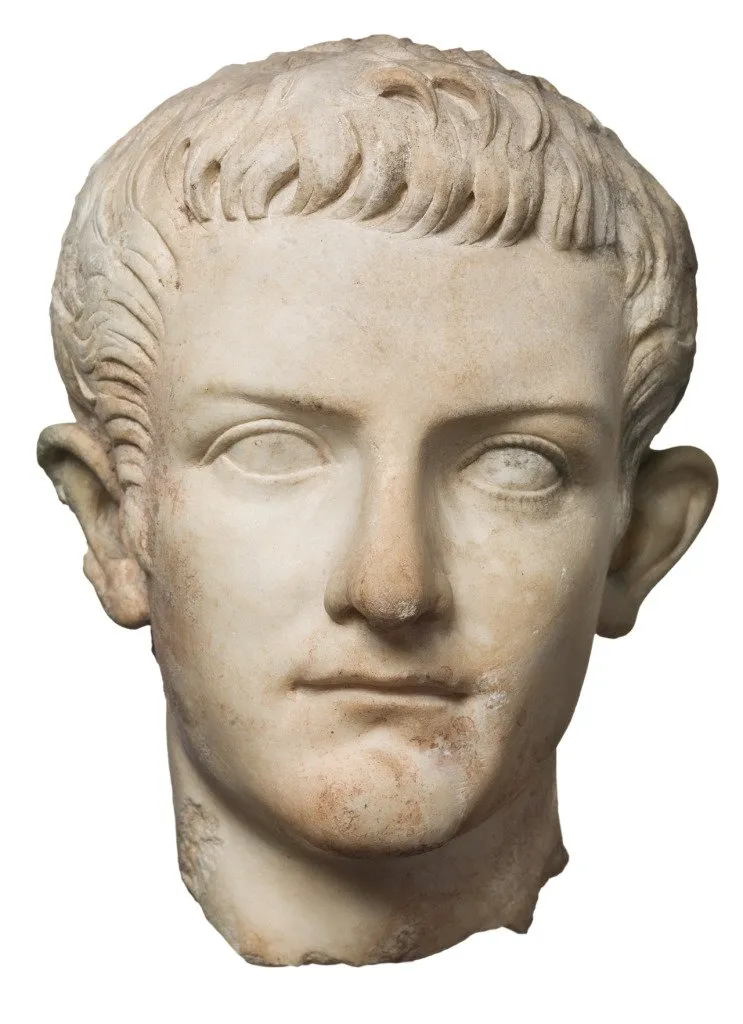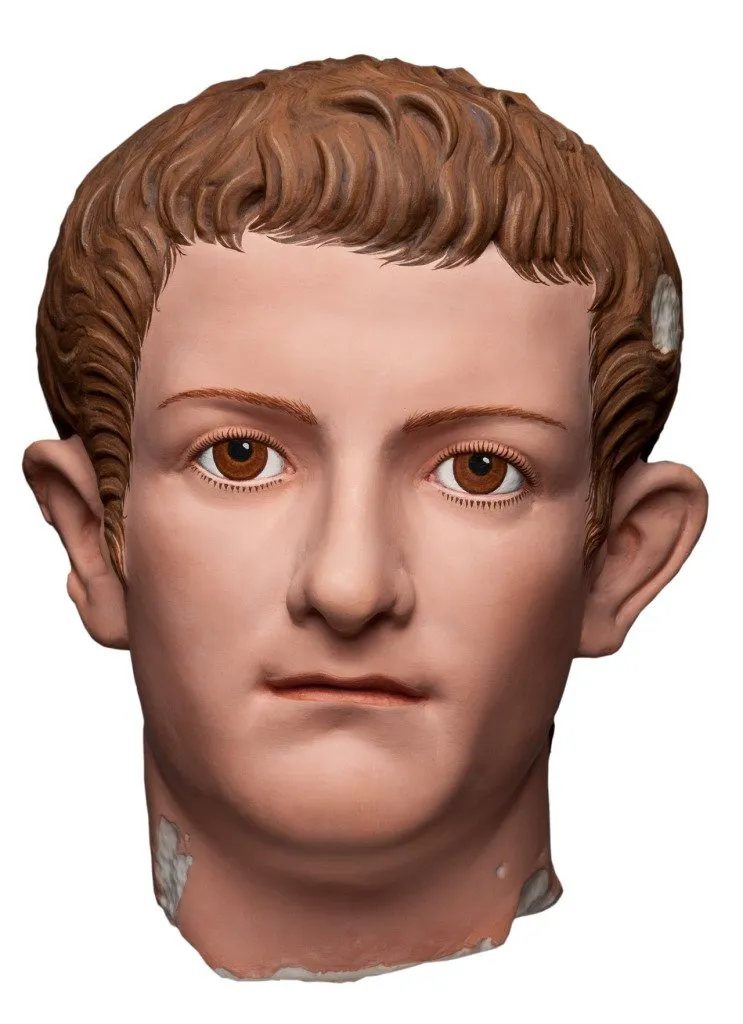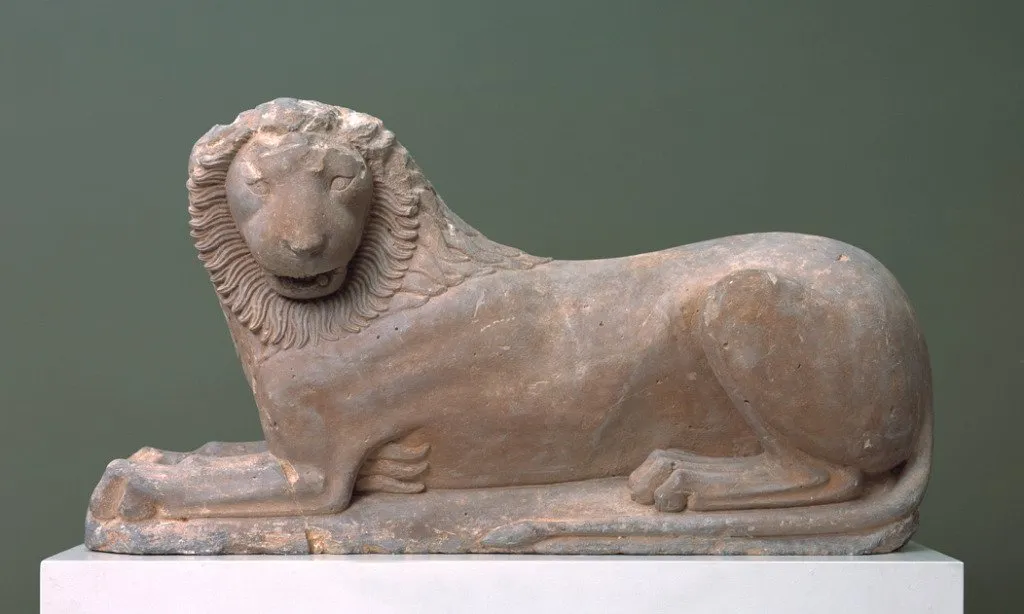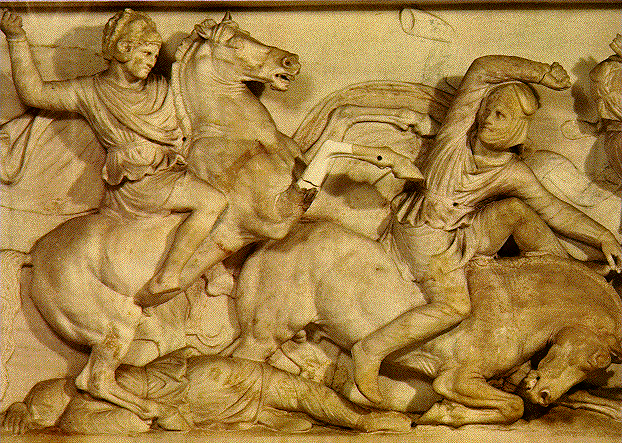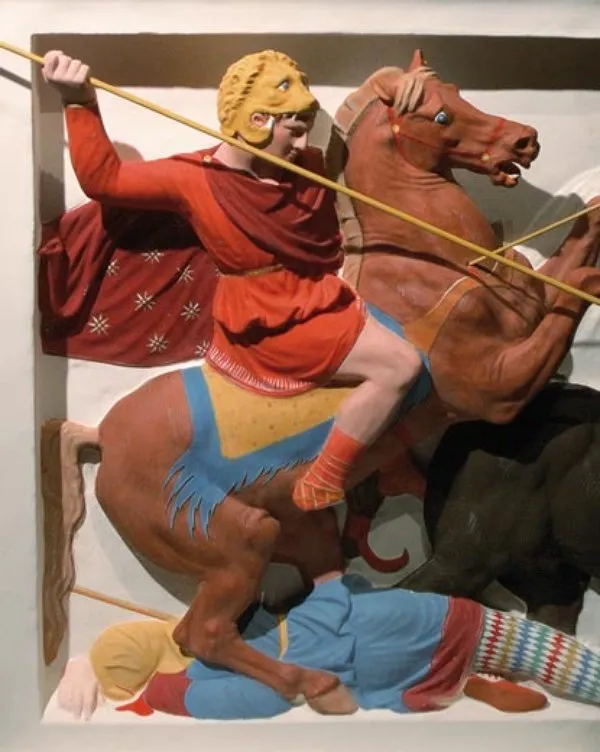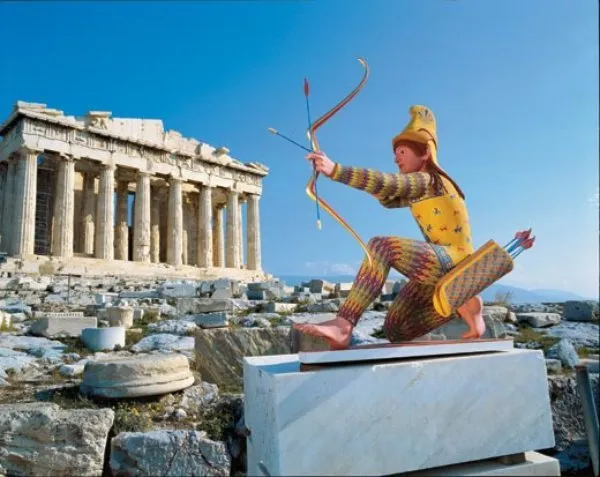As I've mentioned in the past, one of my day jobs is to look for interesting history and archaeology news for a website called The New Historian. This week, I came across a (literally) eye-catching bit of news.
There's a whole subset of art history that's concerned with re-creating how ancient statues from Greece, Rome, and other regions would have looked when they were first made. When you think of these statues, you picture rough white marble, pitted with age, right?
Here's a great example. This is the famous bust of Caligula, as it looks today.
And here's what archaeologists and historians believe it looked after it was sculpted.
That's right, these guys were painted. And not just in relatively realistic colors, either - check out the Lion from Loutraki. Today it looks like this...
But researchers now say that when it was sculpted, it looked like this!
So how in the world can these researchers possibly know how these sculptures were painted thousands of years ago?
The answer: SCIENCE!
Specifically, there are a couple of analysis techniques - and they all involve light. One way they've done it is by "raking light" across the surface of ancient statues. You hold a light source almost parallel to the statue, and minute indentations and raised surfaces show up. It reveals the telltale marks left by uneven wear and tear over centuries - different paints erode at different speeds, and even though the variations might seem infinitesimal, they show up enough to tip off historians that there was something painted there that was a different color. It helps to remove details like patterns on clothing - something that would otherwise be impossible to discern.
Another way researchers have figured out how to discern paint patterns on these now-bare statues is by using fluorescent light. Just like how your clothes glow in the dark when you step into that room in the back of Hot Topic where they keep that stupid poster of the panther, minute traces of paint left on the statue that are too small for the naked eye will fluoresce as well - and differences in pattern can be discerned this way as well.
So that reveals hidden patterns, but how in the hell do historians possibly figure out what these colors actually were? It turns out that using both infrared and x-ray spectroscopy. Again, it's all about light. Scientists literally shine IR light and shoot x-rays at these statues, and then see what - if anything - bounces back. Then, a lot of math takes place to figure out which wavelengths were absorbed and which were reflected, and that helps scientists determine the atomic makeup of the pigments that were used on the statue thousands of years ago, even though the color is long gone. It's similar to the way that astrophysicists can understand what types of elements are in far-off stars by using mass spectrometry, which analyzes the light given off by that star.
So the results are pretty startling. Using paint made from the pigments that would have been around in ancient Greece and Rome - cinnabar for red, arsenic for yellow, azurite for blue - these archaeologists have reconstructed what ancient sculptures would have looked like.
Here's another before-and-after shot. This is the so-called Alexander Sarcophagus. No, Alexander the Great isn't buried there - it bears his name because he's depicted on the side. Today it looks like this:
Meanwhile, using all these techniques, it would have looked something like this when it was new:
Finally, one of the best examples of just how tacky the colors on these statues were, here's the statue of an archer from the Aphaia Pediment, located at the Parthenon in Athens.
And here's what researchers think it looked like:
Yowza. Here's another shot of the archer, along with a restored shield and a partially restored statue of Athena:
My view of ancient Greece and Rome is pretty much turned on its head from this. I guess intellectually I knew that thee regions were much more colorful we think, but being presented with a scientifically accurate representation of just how garish - and vibrant - these statues were makes me smile. What about you?
